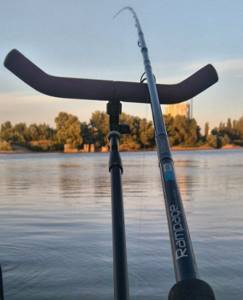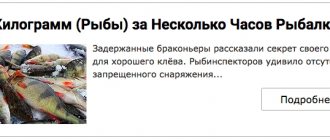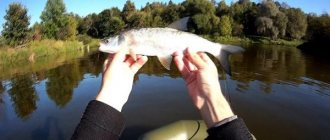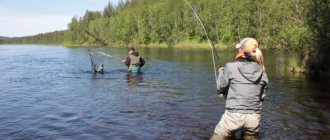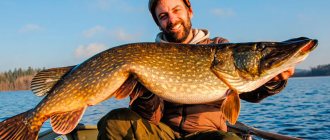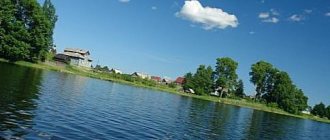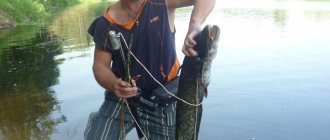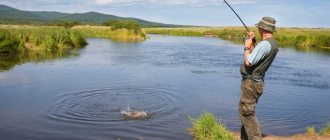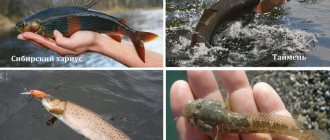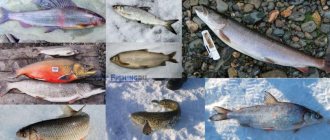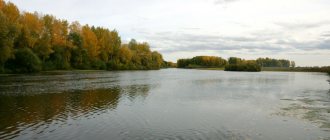There are so many water areas in the Vitebsk region that if they were privatized, each resident would get a body of water equal to a small lake

Rivers
Vitebsk residents like to get close to the bank of the Western Dvina in the area of the bridge. There you can find a hole with an edge and quickly deal with complementary foods. Bream is a good bream here, just don’t overfeed. And it’s easy to get to the banks of the Beaver River in the area of the village of the same name. The gatherings are dry, and this attracts many *fisher* lovers. It is clear that there is a problem with a large predator. But there is always plenty of peaceful fish. And on the Eastern Berezina, near the bridge on the Moscow-Brest highway, it is recommended to visit a riverbed pit with a feeder. This is like a bream barrel, although bream are caught successfully throughout the river.
Fishing in Vitebsk and Vitebsk region
. The detained poachers told the secret of their success for a good bite. Fishing inspectors were surprised by the absence of prohibited equipment. Surely every fisherman has heard many times about wonderful fishing spots in Belarus; there are a lot of magnificent reservoirs throughout the territory, and true fishing lovers can visit the country just to visit one of the famous reservoirs. Different regions have their own ponds with their own fish populations, for example, Vitebsk is rightfully considered the most famous region. There are many rivers and lakes that are suitable for fishing at any time of the year.
Lakes and reservoirs
Queen of lakes in the Vitebsk region - Long. In terms of depth (there is a mark of 57 meters), it has no equal. But this is more likely for hydrologists, and such depths are inaccessible to amateur fishermen. Another thing is something like Inovo. Bottom fishing here is quite accessible and even preferable. Just like on Plisa, where it’s easy to launch a *boat*, detect changes in depth and set up a feeding ambush for pike, zander or tench. The “foreign” Lake Drisvyaty is often visited, which attracts with good catches, although for fishing here you have to pay a fee to the Lithuanian border guards. Losvido is a lake that needs no introduction. Everything is known about it, even at what time of day which fish is best caught.
How to catch bream on a feeder
And finally, we can move on to more theory regarding the search for a place and the tactics of catching bream itself. First of all, you need to decide on a place for fishing. You should not choose a place under the canopy of trees, because they will greatly interfere with casting. High banks will also bring their own inconveniences, especially when fishing.
Having an echo sounder will make the task of finding promising points where fish may be much easier. The echo sounder will immediately show all the bottom irregularities, as well as the fish, and based on these indicators you can choose the most optimal point. During the day, bream prefers to move away from the shore, but catching bream at night on a feeder involves searching for it in coastal areas. Bream really loves the so-called tables. Tables are small flat places on the bottom where he can feed comfortably.
If you don’t have an echo sounder, you will have to use a marker sinker. It has a special shape, thanks to which the fisherman will feel all the unevenness of the bottom and will be able to determine the depth himself, as well as the composition of the bottom. For example, if the bottom is peat, then the feeder will simply fall through and fishing in such a place will not work. The marker sinker will knock a little on the shell shell.
Starting feeding and beginning of fishing
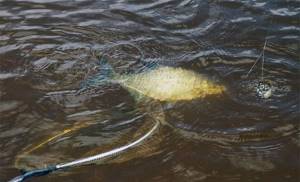
Having decided on the place, we begin to do the starting feeding. To catch a nice-sized bream, you need to prepare an appropriate table for it. We make about 5-8 casts with food at one point. In order to throw in one place, you need to use clipping. Each reel has a clip to which we hook the fishing line and after that all subsequent casts will not exceed the distance after which the fisherman clipped. When casting with a clip, you need to move the rod back so as not to tear off the tackle. When the line gets tight, it will pull the rod along with it and there won’t be such a strong jerk.
After the starting feeding, you can move on to the main fishing. The most important thing is to throw it in one place. This is where the bream will slowly approach. The intervals between casts are also selected based on the conditions. When the bite is active, casts should be made every 2-4 minutes to add food and keep the fish in place.
Feeder fishing always welcomes perseverance. You need to constantly watch the tip of the rod in anticipation of a bite, and it can happen at any moment.
Important! After catching another specimen, it is advisable to clean the leash of mucus, since there is an opinion that this mucus scares away other individuals and the number of bites may noticeably decrease.
Paid fishing
Paid fishing in the Vitebsk region, mainly at fish farms. The advantage is that the fish farm has more opportunities to equip the reservoir. The downside is that this is not a profitable business, and it is not profitable to make it particularly expensive. That’s why people are not allowed to stay overnight at such pay sites as the Novinki fish farm, Novolukomlsky and others. Rented ponds are a different matter. There are more than three hundred of them in the region, and most of them are in the Braslav region. Here the basis of management is the possibility of industrial fishing and sale. Paying for fishing is a decisive factor only on purely amateur waters.


If in maternity hospitals in the Vitebsk region every newborn was given a set of hooks or fishing lines, this would be correct. Only inveterate homebodies can live here and not fish, relaxing on rivers and lakes with a fishing rod. Author: Pike.Pinsk©
There are fish everywhere
Local fishermen say that it is not difficult to catch fish in the local lakes.
There are more than two thousand lakes in the region. And it doesn’t matter whether you go out “hunting” for pike on the Great Dvina or have chosen quiet, shallow-water places for fishing. The Vitebsk region, not to mention the whole region, offers anglers such a wide variety that both beginners and professionals will find a suitable fishing spot for themselves.
Experienced fishermen advise exploring several options at once. Of course, it’s convenient to come to one body of water and sit there all day. But in order not to get into trouble (after all, fish can sometimes be capricious), mark a couple of lakes close to each other at once, so that in case of failure you can quickly change your location.
It is also important to take into account the fact that some lakes provide a rich catch only in winter. In other bodies of water, fishermen are lucky only when fishing in open water during the warm season.
Experienced fishermen advise beginners to choose one of the following lakes, so that the process itself does not disappoint and will certainly please you with its productivity
Lake Ivanovo consists of a group of lakes totaling 13. People fish here only in the summer, because fishing takes place from a boat.
But there is no point in fishing from the shore. Among all types of fish, the most popular are pike, crucian carp, bream, tench and perch.
The second lake is Obsterno. The main advantage of this reservoir is the large number of convenient access points.
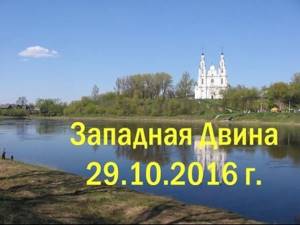
The lake is quite large and equipped with a special recreation center.
The best time to come for fishing is in the summer. You can catch bream, pike, tench and crucian carp using various fishing tackles and baits.
If we talk about Lake Drisvyaty, it is distinguished by its impressive size. The depth of the lake in some places reaches 19 meters.
It is best to come here in the summer, as you need to use a boat. Anglers use different baits to catch: catfish, perch, burbot, pike perch and pike.
In addition to these species, you can also find in the lake: bream, vendace, crucian carp, eel, and ide. A heavily overgrown shoreline is observed near Lake Shaw.
The depth here is shallow, and it is best to fish from a boat. So here, too, productive fishing can only be in the summer.
And here's what you need to know: Fishing in the Murmansk region: description, forecasts, maps
Lake Plisa has fairly clean water, and flowing water at that. And here you are allowed to fish not only in summer, but also in winter.
Fish will be good to catch both from the shore and from the boat. There is a comfortable recreation center on the shore itself.
What's biting in the Vitebsk region of Belarus?
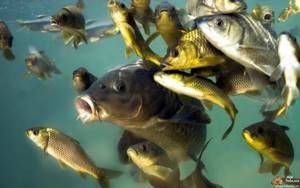
As mentioned above, throughout the region there is a huge amount of a wide variety of fish. But there are also those that are found on almost every river or lake and quite often:
It is much less common for a fisherman to catch burbot, pike perch or catfish on a hook. Of course, it all depends on the chosen place; in a certain area there may be a lot of certain fish, while in another place there is practically no fish.
Leashes and hooks
The optimal hooks for catching bream on a feeder are numbers from 10 to 14 according to the international classification.
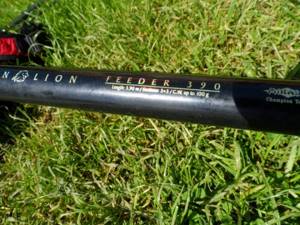
Choose hooks made of hardened metal; strength depends on this, which is extremely important for large bream. With these hooks you can use a large hook without worrying about the risk of deformation.
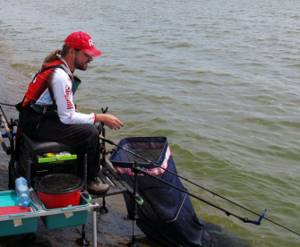
For leashes, it is optimal to use a fishing line with a cross-section of no more than 0.2 mm. If you are hunting large bream, you don't have to worry about being spooked by the thick line.
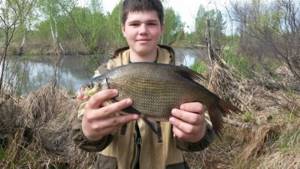
Large individuals are not very shy. And strength is an important factor, since a large bream will easily tear off a thin leader.
fishing line
To catch bream on a feeder, you can use either a monofilament line with a cross-section from 0.2 to 0.22 mm or a braided line with a cross-section from 0.12 to 0.14 mm.
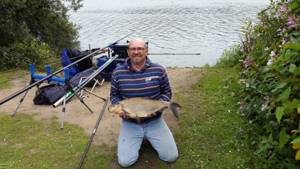
Professional fishermen advise using braided fishing line, as it is more durable and less noticeable in the water.

This line does not stretch, so it is easier and easier to cast the feeder. This is a significant factor, since bream needs to be caught at a considerable distance from the shore.
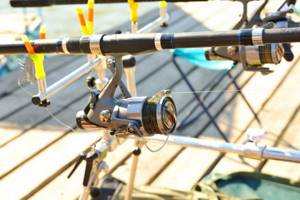
Coil
For the feeder, you should use a high-quality spinning reel with a sufficiently deep spool.
The feeder fishing technique involves a high load on the reel. This is especially true for catching bream on a feeder in the current. Therefore, it is advisable to choose a reel with at least three bearings.
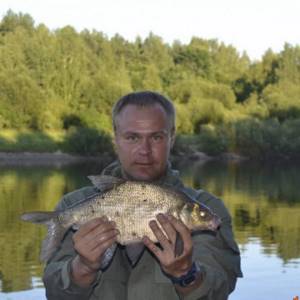
The clutch position can be any. However, it is extremely important to adjust it accurately, otherwise there is a risk of damage to the fish’s mouth and frequent escapes. The optimal gear ratio is 4-6.
